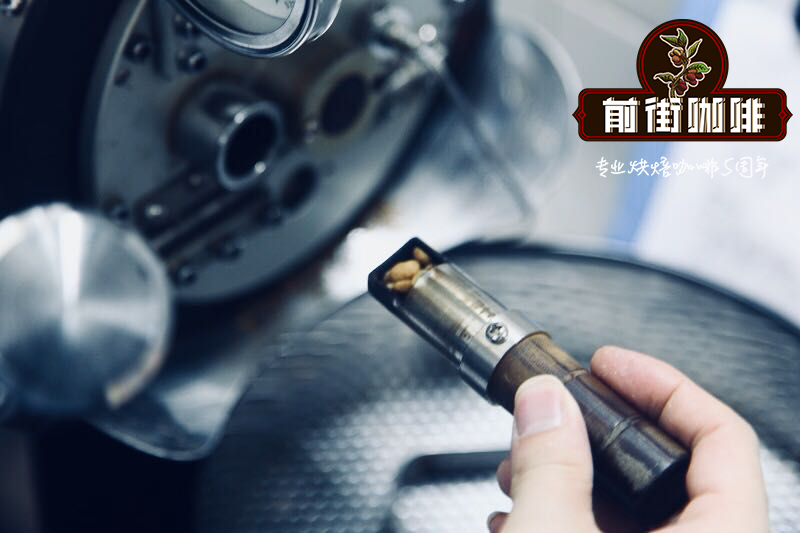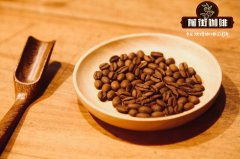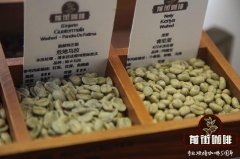A glimpse into the Origin of Arabica Organic Coffee in Southeast Asia A brief discussion on Coffee drinking Culture in Asia

Professional coffee knowledge exchange more coffee bean information please follow the coffee workshop (Wechat official account cafe_style)
Arabica _ Arabica coffee beans _ Arabica and Robusta
Coffee cultivation in Southeast Asia has a considerable development prospect in modern times.
Among them, many coffee growers have also begun to invest in organic, sustainable and fair trade efforts, especially in Thailand and Vietnam, which have also promoted the tourism characteristics of pro-environmental farm tourism, which can be said to be the advent of the organic coffee era in Southeast Asia!
The following is an introduction to several well-known organic farms growing organic coffee in Asia.
Aka Mama Coffee Farm (Akha Ama)
Aka Amma Coffee Farm is run by a group of aka people (the Akha) living in the village of Maejantai in the mountains of northern Thailand. Because the local climate is very suitable for growing Arabica coffee beans (Arabica), the Thai government led the aka people to grow coffee beans in the 1990s, but they have always been treated by unreasonable transactions by middlemen.
In 2010, the Lee Ayu (Ayu Chuepa) family founded Akama Farm to run Fairtrade coffee, from coffee cultivation to sales, ensuring a reasonable return. Lee's efforts have gradually led to the development of Majiatai Village. So far, 14 aka families have joined the operation of Akama Farm.
Aka Mama Farm operates in a "sustainable environment and management" mode, which has a lot to do with the ethnic character of the aka people, who are traditionally self-sufficient. They have always planted and collected all kinds of food and supplies needed for their own life, and live through cooperation with nature, rather than fighting and conquering nature. This traditional view of national culture coincides with the current trend of sustainable agriculture. Akama Farm has mixed crops, reducing the use of chemical fertilizers and herbicides; coffee crops, which are as tall as humans, are planted between taller fruit trees and a variety of vegetables, which are good for soil ecology and produce humus soil. prevent hillside erosion and help retain water during the dry season. Through regular crop rotation, the negative impact of pests on crops has also decreased.
In 2010 and 2011, Akama Farm coffee stood out in the World Cup Tester Competition (World Cup Tasters Championship) held by the European Fine Coffee Association (Speciality Coffee Association). It was certified as an excellent coffee with unique quality and taste recognized by consumers, and reached the highest standard in the cultivation, roasting, storage and brewing of green coffee.
Bean Yichang Coffee Farm (Doi Chaang)
Located in the mountains of northern Thailand (near the border between Laos and Myanmar), Doi Chaang village, assisted by the Thai government in the 1960-90's, provided winter crops, including Arabica coffee beans (Arabica), and encouraged residents to switch from opium cultivation to coffee cultivation. Like the Akkas, the non-Thai mountain minorities did not speak Thai, and at that time the coffee market was still not sound and they could only rely on middlemen to assist in sales, but were exploited.
In 2003, Panachai Pisailert, a Wicha Phromyong of Douyichang Village, co-founded Douyichang Coffee Co., Ltd. (Doi Chaang Coffee Original Co., Ltd.) with Pitsanuchai Kaewpichai to strive for the sustainable development of coffee cultivation. The village tribes working with Dou Yichang Coffee Co., Ltd. also include Akha, Lisu and Chinese. After 15 years of joint efforts, they now cover 11000 acres of coffee growing land. Coffee beans are sold in many retail stores in Thailand, Canada and Southeast Asia, as well as many coffee shop branches.
Dou Yichang Coffee Farm is organically certified by USDA to provide consumer-friendly environment-friendly and personal-friendly ethical products. When Arabica coffee was planted that year, vast forests were destroyed by over-irrigation because these crops needed a lot of good and stable water. However, the high quality of Arabica also depends on the shade and ecological diversity of the environment.
To this end, farmers in Dou Yichang are working together to establish and maintain forests and plant multi-level shade. Today, for farmers in Dou Yichang, it is a consensus that "coffee planting is equivalent to afforestation", taking good care of every link from the earth to the cup to ensure the highest quality coffee in general.
The main goal of Dou Yichang Coffee is to help Dou Yichang coffee farmers to get better prices when selling crops and to develop and maintain the quality of Dou Yichang Coffee. To this end, in 2006, they partnered with Canadian John M. Darch to buy coffee beans produced in Thailand by Canadian partners, while the Canadian side engaged in roasting, market distribution, etc. (currently the main markets are South America and the United Kingdom), and promised that coffee producers would be able to obtain 50% of the sales profits, committed to fair trade.
Today, Baan Doi Chang has become one of the major areas in the world where high-quality Arabica coffee is grown. In August 2015, the geographical indications of the European Union (EU) certified the registration of Doi Chaang Coffee.
From the earth to the cup
Coffee processing from planting to selective picking, to wet fermentation, have been specially prepared, after years of certification, known as world-class special coffee. Its unique aroma, balanced acidity, low caffeine content and perfect growth conditions make Dou Yichang Coffee one of the best Arabica coffees in the world.
Goho Coffee Farm (K'Ho Coffee)
In the 1920s, France brought the first coffee beans to Vietnam, and the Co Lieng family family grew coffee on the slopes of Lang Biang Mountain in Dalat. However, Vietnam has always faced great challenges in coffee cultivation: excessive deforestation, soil depletion, exploitation of farmers, and so on.
The farm reached the fourth generation of the family's heir, Rolan Co Lieng, and her American husband, Joshua Guikema, worked to help the farm find a market for green Arabica coffee. In 2012, Joshua received an order for 20 tons of coffee at an organic bazaar, but rejected it because it was unable to produce it in large quantities. Joshua began to invest in the creation of specialty coffee brands-buying new baking machines, designing corporate trademarks, and discussing with the community about the market positioning, sustainability, transparency of production methods, and so on. Under such gathering and discussion, the community shared their views and coffee production and processing technology, which formed a stronger sense of community in the Goho tribe and promoted the development of the Goho coffee community brand.
Rolan and Joshua set up the family business of Goho Coffee, which is dedicated to providing freshly roasted, environment-friendly specialty Arabica coffee. In addition, farms are sold directly to local communities and international buyers to ensure that farmers can make a reasonable profit.
Coffee culture in different parts of Asia
In general, the traditional way of making coffee in the West is inseparable from American style, latte, cappuccino, mocha and so on. However, the habit of making and drinking coffee in Southeast Asia is different from what people are familiar with.
There is a special "coffee drinking" culture in Southeast Asia. at the same time, coffee production in Southeast Asia has ranked second or third in the world. Drinking coffee has become one of the priorities of life. Don't leak when you travel to Southeast Asia for a cup of coffee next time. Let's follow us to see what's going on!
Thailand
Thailand has a unique Thai iced coffee, Thais call it Oliang or Oleang, with a strong flavor unique to Thai cuisine. Oliang tastes sweet and will add other ingredients when blending, such as condensed milk, sugar-free condensed milk, soy milk, corn, sesame seeds, or other personal favorite materials! Traditional Thai coffee is made from concentrated or diluted milk, while we use cream coconut milk instead of non-dairy products. A few cardamom and almond extracts take the cream component of this drink to another level. Then brew the espresso on cream and ice to make this delicious drink.
Malaysia
Malaysia's white coffee (White Coffee), which originated from Ipoh, was specially created by a coffee roaster from Hainan in the 18th century for Chinese immigrants from the Qing Dynasty. When baking, butter is added, the bitterness of coffee beans is removed, condensed milk is added when brewing, and the color of the beverage is light brown. In addition to being popular with local people, white coffee is also one of the most popular popular drinks in Singapore.
Malaysia also has a traditional black coffee, known locally as "kopi O", which is roasted with sugar and margarine, with a strong bitter flavor but not astringent. Coffee beans are roasted with palm oil and margarine, and the resulting coffee contains condensed milk. [1] as part of commercial sales, the main popular brand of Yibao White Coffee is Old City White Coffee.
Indonesia
Indonesia, which has a rich and special traditional coffee culture, calls coffee "kopi". It is brewed in cloth bags and does not rinse very often after each brewing, so the brewed coffee has a special flavor. When roasting coffee beans, butter and corn kernels are used to bake coffee beans with a sweet, deep flavor and unique to the world.
Sumatra Coffee coffee in Sumatra, which uses a traditional wet grinding method (Giling Basah), retains a higher degree of moisture than the grinding method commonly used in the world, and can produce a coffee with a unique smooth taste and strong aroma.
Java specializes in civet coffee (Luwak Coffee). In the 18th century, the locals allowed wild Asian raccoons to enter the coffee plantations of the colonists and ate ripe coffee berries, while the leftover seeds of these raccoons were collected, washed, dried and roasted by the local people to make civet coffee. The taste is not much different from that of ordinary black coffee, but the aroma of coffee beans is more prominent.
Viet Nam
Vietnam's drip coffee (Drip Coffee), is a unique way of drinking coffee, can be described as the art of testing patience. They use a special cup with a metal filter (phin) in which ground coffee beans are put in. After adding hot water, they have to wait patiently for the rich coffee to drip from it. In order to neutralize the bitter flavor of robusta coffee, most Vietnamese will add condensed milk and even eggs, yogurt and fruit!
Cambodia
Coffee was grown during the French colonial period in the 1700s. Traditionally like deep-roasted coffee (almost black), grind the beans and brew them with a sieve similar to a sock bag to make a very rich black coffee.
Arabica | members of the Arabica coffee bean family _ Arabica and Robusta
Important Notice :
前街咖啡 FrontStreet Coffee has moved to new addredd:
FrontStreet Coffee Address: 315,Donghua East Road,GuangZhou
Tel:020 38364473
- Prev

What is robusta coffee? How to quickly identify robusta and Arabica coffee beans?
Professional coffee knowledge exchange more coffee bean information please follow the coffee workshop (Wechat official account cafe_style) Robusta coffee flavor description abrasion characteristics varieties of fine coffee taste price introduction of coffee friends you must know that there are three major varieties in the market the most are Robusta and Arabica do you know how to identify Robusta's picture search results
- Next

Why is Italian coffee so good? Italian coffee 100% Arabica beans?
Professional coffee knowledge exchange more coffee bean information please follow the coffee workshop (Wechat official account cafe_style) Arabica _ Arabica coffee beans _ Arabica and Robusta Italian coffee is famous, and locals regard coffee and wine as daily drinks. This time, I visited Mattia Ferrero, the international training instructor of the Italian coffee brand Lavazza.
Related
- Detailed explanation of Jadeite planting Land in Panamanian Jadeite Manor introduction to the grading system of Jadeite competitive bidding, Red bid, Green bid and Rose Summer
- Story of Coffee planting in Brenka region of Costa Rica Stonehenge Manor anaerobic heavy honey treatment of flavor mouth
- What's on the barrel of Blue Mountain Coffee beans?
- Can American coffee also pull flowers? How to use hot American style to pull out a good-looking pattern?
- Can you make a cold extract with coffee beans? What is the right proportion for cold-extracted coffee formula?
- Indonesian PWN Gold Mandrine Coffee Origin Features Flavor How to Chong? Mandolin coffee is American.
- A brief introduction to the flavor characteristics of Brazilian yellow bourbon coffee beans
- What is the effect of different water quality on the flavor of cold-extracted coffee? What kind of water is best for brewing coffee?
- Why do you think of Rose Summer whenever you mention Panamanian coffee?
- Introduction to the characteristics of authentic blue mountain coffee bean producing areas? What is the CIB Coffee Authority in Jamaica?

